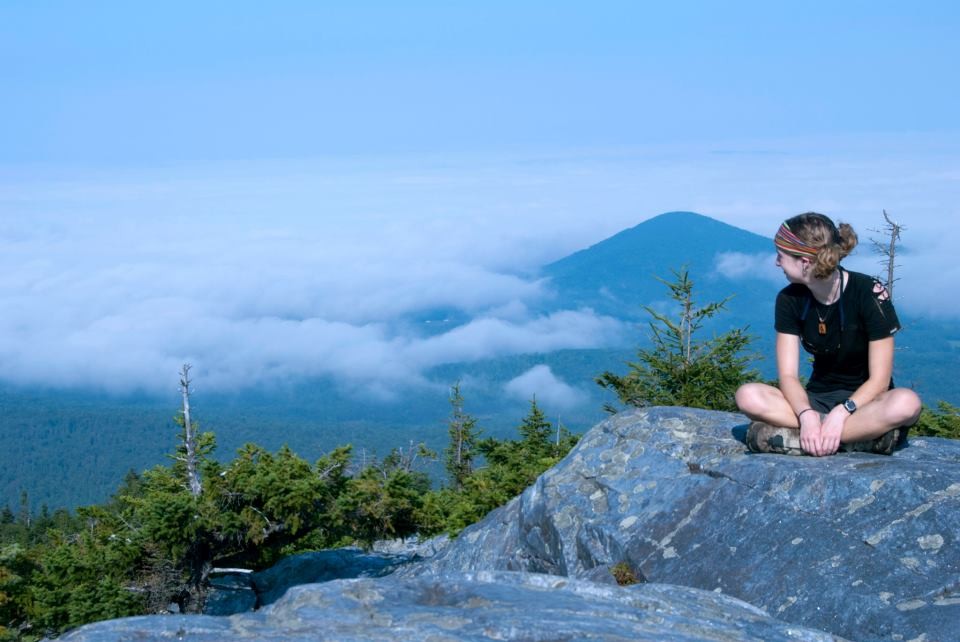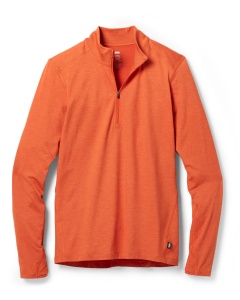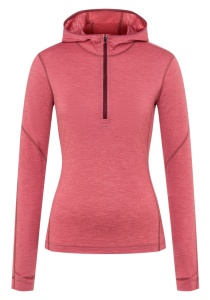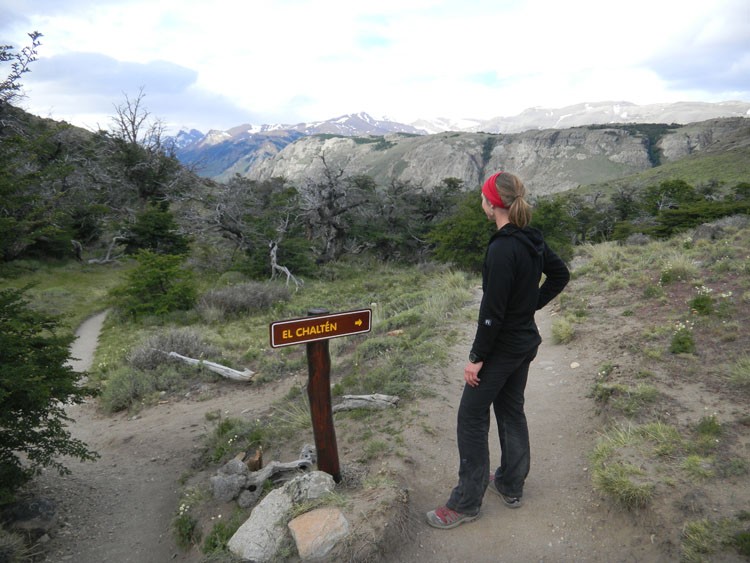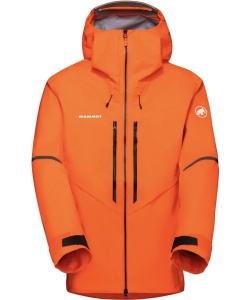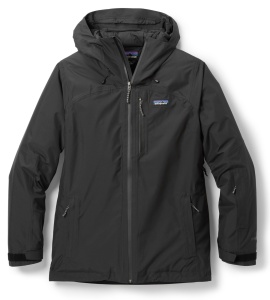Enjoying the mountains to the fullest extent requires knowing how to dress. With the right clothes, an afternoon alpine thunderstorm can make for a surreal and magical experience in the backcountry. But, unprepared, that same storm might leave you recalling a shivering, wicked-cold, misery tour (or worse).
This three-part article is designed to share expert advice and know-how for staying warm in the mountains. We'll give you an overview of how layering systems work to keep you warm and dry, why you get cold, and our favorite layering systems for different activities and conditions.
Here's an overview of the three articles in this series:- How to Layer Clothing to Keep Warm - (this article you are reading) Covers how modern technical clothing is designed to work as a layered system and explains each layer from base to outer shell.
- Why You Get Cold in the Mountains - Provides background information on exactly how and why you lose (and gain) heat during outdoor activities, and how a layered system addresses those thermodynamics.
- How to Layer Clothing for Each Season - The part of the series where the rubber meets the road and we provide recommended layered clothing combinations for practical situations ranging from an all-day hike in the mountains to extreme mountaineering.
In this section you are reading we'll focus on how modern technical clothing is designed to be used as a layered system: each layer serving a purpose in keeping you warm, allowing you to combine different layers to tackle different conditions with grace and style. While layers play a less critical role when car camping, when you engage in athletic exercise, whether it's hiking, skiing, or climbing, a layered system provides you to the tools to avoid overheating when you are working hard, and yet stay warm when you stop.
Types of Layers
Below we list the different types of layers, which can be used in combination with each other to reach the ideal effect for the season, environment, and activity you are pursuing. These layers work together to achieve the four goals of wicking moisture, trapping in heat, insulating from cold, and blocking wind and weather.
Base Layer
A base layer is the layer closest to your skin, meaning it collects the most sweat. The purpose of this layer is to keep you dry by pulling moisture away from your skin and spreading it throughout the fabric. At the same time, this fabric should fit snugly and retain some insulating properties. Never wear cotton as a base layer, which does wick moisture away, but then retains that moisture as the cotton loses its resiliency, loses its warmth, and causes too much evaporative cooling. Learn more about the Thermodynamic processes that allow you to get cold.
There are two main categories of base layers: synthetic and wool. Examples of synthetic layers are polypropylene, polyester, or Capilene long underwear, the benefits of which are that they are not itchy, tend to be less expensive than wool, are more durable, and dry faster. The downside to synthetic base layers is that they tend to be stinky; they collect body odor fast, and it never seems to go away.
Today, increasing numbers of outdoor-savvy people choose wool over synthetics for their base layer. Why? Many feel that wool insulates better than synthetic base layers when it's cold, and stays more comfortable over a larger temperature gradient when its hot. Although wool takes longer to dry than synthetics, it continues to insulate well even when wet. Today, wool base layers are made primarily out of merino wool, which is thin and lightweight, less itchy than traditional wool, and does not retain stench. Here at OutdoorGearLab, the Editors prefer wool base layers for most activities. However, we do notice that wool tears and abrades much more easily when rubbed against a rough surface, a key advantage of synthetics for activities such as rock climbing. For activities such as hiking, wool base layers work wonders.
Base layers come in different weights, so depending on the conditions you expect to be in you may select a thicker, more insulating base layer. However, you may be surprised to learn that most mountaineers prefer thin base layers. The reason is that when performing strenuous activities, even in cold environments, overheating can be as big a problem as keeping warm. If you plan on being in cold conditions but also plan on aerobic activity, such as in mountaineering or nordic skiing, typically a thinner base layer is the wisest choice because it helps wick the sweat the best when you are working hard. Rely on the layers above your base layer for insulation. Your base layer's key function is to manage the conditions right next to your skin.
Lastly, we prefer a zip-neck base layer, which gives you another tool to conveniently regulate body temperature. Alpine activities such as hiking, climbing, or backcountry skiing can seem like an endless cycle of putting on and taking off clothing. A zippered neck can often save you the time required to stop and shed an outer layer. The additional cooling of an open neck is substantial when you are working hard, and easy to zip up when you take a rest.
Men's Base Layer Shirts
Here are a few of our favorite men's base layer tops:
Smartwool Classic Thermal Merino 1/4 Zip
REI Co-op Midweight Half-Zip
Women's Base Layer Shirts
And, here are our top review picks for women's base layer tops:
Black Diamond Solution 150 Merino Quarter Zip - Women's
Arc'teryx Rho Hoody - Women's
Mid-Layer
The purpose of the mid-layer is to capture warmth through trapped air. Typically a mid-layer is a fleece or a thick wool layer. Certain brands label their mid-layers with different weights, such as the Patagonia fleece system of R1-R4, or Icebreaker Merino Wool layers that come in a 260 mid-layer weight. A mid-layer usually has some loft to it to help trap the warm air, but is also breathable so it is not suffocating and sweat-causing underneath a shell or outer layer.
Sometimes, particularly in the three-piece layering system, a mid-layer can also be an insulating layer such as a thin synthetic or down puffy. The best insulated layers to use as a mid-layers are pieces like the Mountain HardWear Zonal jacket that has insulation, but also has breathable Powerstretch fleece panels on the sides.
As with base layers, we prefer a zip-neck or a full zip mid-layer to make it easy to regulate heat.
Men's Fleece Jackets
Here are a few of our favorite men's mid-layer fleece jacket picks:
Patagonia R1 Air Full-Zip Hoody
The North Face Canyonlands Hoodie
Women's Fleece Jackets
And, our favorite fleece jackets for women:
Arc'teryx Kyanite Hoody - Women's
REI Co-op Flash Hyperstretch- Women's
Light Wind Jacket Layer
Particularly in summer layering systems, a windbreaker style jacket (aka "wind shirt") is a necessary and light layer. Protection from wind-chill makes a significant difference in how warm you feel, and a light wind jacket offers great bang for the buck in terms of warmth vs. weight. If you are pursuing an activity such as a day hike or short rock climb in good weather, where a technical outer shell might be overkill, bringing a light wind layer is the easiest and lightest layer to bring along that offers the most protection. Most wind layers also offer moderate protection in the event of a brief summer rain, such as an afternoon thunderstorm, giving you enough water resistance to comfortably retreat and/or find cover.
To save weight and complication in other layering systems, the wind jacket layer can be eliminated by selecting either a windproof mid-layer (such as the Patagonia R4 fleece or The North Face Windwall fleece) or by selecting a windproof shell, such as the windproof Marmot Reyna soft shell, the Arc'teryc Venta SV soft shell, or a windproof hard shell.
Men's Windbreakers
Here are a few of our favorite windbreaker picks:
Patagonia Houdini - Men's
Rab Vital Hoody - Men's
Women's Windbreakers
Here are the best-scoring women's windbreaker jackets from our testing:
Rab Vital Hoody - Women's
SoTeer Waterproof Hooded - Women's
Insulation Layer
An insulation layer, whether synthetic or down, provides extra loft and warmth, essentially doing what a thick mid-layer does, but multiplied, and with a much higher warmth-to-weight ratio. Size your insulated layer jacket to fit comfortably over a light fleece and underneath an outer technical shell (see our Winter Wanderings layer system). When the weather is dry, your insulated layer may be worn as an outer layer, keeping you warm around the campsite, or for extra warmth between aerobic activities.
As a general rule, we prefer a light down jacket for our insulating layer, such as a down sweater style of jacket. Light, highly compressible, and offering the best warmth-to-weight ratio, a lightweight down jacket is our go-to choice for insulating layer more often than not. However, if the climate presents sustained wet conditions, such as a backpacking trip in the Northwest, down's inability to insulate when wet makes it a poor choice, and a lightweight synthetic jacket rules the day. The same is true for conditions like climbing a big wall in Yosemite, where your ability to protect yourself from a rainstorm is limited, and the danger of losing your insulation layer's effectiveness could be life-threatening.
A hoody is also a smart option for your insulation layer, offering a substantial increase in warmth for almost no cost in weight or bulk. We recommend it.
In summer conditions, we'll often forgo a mid-layer if we're bringing an insulation layer (or visa-versa), but as temperatures drop, we'll combine both mid-layer and an insulation layer for extra warmth. Especially after sundown, combining a mid-layer with an insulation layer provides substantial warmth around the campsite, keeping you comfortable until cold mountain conditions drive you into the more robust shelter of tent and sleeping bag.
In colder conditions, such as winter snow camping, we'll move to a thicker down or synthetic jacket for our insulation layer despite the added bulk.
Men's Down Jackets
Here are a few of our favorite men's down jackets:
Rab Electron Pro
REI Co-op 650 Down
Women's Down Jackets
Here are our review's top picks for women's down jackets:
Rab Neutrino Pro - Women's
Marmot Highlander Hoody - Women's
Outer Shell Layer
If the weather conditions are not severe, your favorite rain jacket can serve as an excellent outer shell to keep you dry (and warm). But, to be prepared for more severe weather involving heavy sustained rain, or backcountry snow storms, a “technical outer shell” (AKA hardshell jacket) is recommended. A technical outer shell is your father's rain jacket on steroids. Built of materials that offer both breathability and water resistance, a technical outer shell understands that your outdoor lifestyle will cycle between sweating like a pig and hunkering down from the storm. The primary function of a shell is to protect you from the elements when conditions take a turn for the worst. Two flavors of outer shells are offered: hard and soft. A soft shell will be more flexible and breathable and may be water-resistant but not waterproof. Some come with a laminated windproof membrane; others don't. A hard shell will be both waterproof and windproof but not as breathable. Depending on the types of conditions you plan on heading out in, one or the other may be more appropriate. If sustained rain conditions might occur, there is no replacement for a waterproof hard shell. The best will offer taped seams, waterproof zipper systems, multiple layers, and materials that offer some breathability even though they are waterproof.
Rain Jackets
Here are a few of our picks for men's rain jackets:
Arc'teryx Beta LT
Helly Hansen Loke
And here are our picks for women's rain jacket:
Outdoor Research Aspire II - Women's
Arc'teryx Beta LT - Women's
Hardshell Jackets
Here are a few of our favorite men's hardshell jackets:
Norrona Trollveggen Gore-Tex Pro Light
Mammut Nordwand Advanced
The top picks from our women's hardshell jacket review:
Arc'teryx Beta AR Jacket - Women's
Rab Kinetic Alpine 2.0 - Women's
Combined Insulation and Outer Shell
An alternative to a separate technical shell is a jacket system that combines an insulation layer with a shell. For example, most ski jackets take this approach since it is both less expensive and more convenient to have both layers combined when skiing at a resort. Similarly, some heavy winter jackets combine a thick insulation layer and a shell layer into a bulletproof winter coat.
So if an integrated insulation layer and shell is a great idea for a ski jacket, why not combine them all the time?
Men's Ski Jackets
Here are a few of our Review Editors' favorite ski jackets for men:
Helly Hansen Alpha LifaLoft
Arc'teryx Sentinel - Women's
Women's Ski Jackets
Top picks from our review of women's ski jackets:
Arc'teryx Sentinel - Women's
Patagonia Insulated Powder Town - Women's
For outdoor athletic endeavors like hiking, backpacking, or climbing, there is a great advantage to keeping your outer layer separate. Here's why. You will need to regulate significant body heat when you exert yourself. Simply stated, you are going to break a sweat. And, the ability to add breathability by shedding the outer layer is substantial. More than any other layer, your outer shell is a barrier to breathability, which is a problem when you're working hard. A technical outer shell gives you the freedom to leave that barrier in your pack until you really need it, a key advantage in the backcountry as you cycle from exertion to rest. And while your ski jacket-wearing buddies are not prepared for a backcountry ski trip, your technical layering system works just as great on the ski lifts as it does when you skin up a slope.
Learn more! Keep reading the second two parts of this article: Why You Get Cold in the Mountains and How to Layer Clothing for Each Season.




